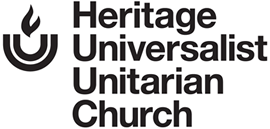-
Preparing for Stewardship Sunday, March 26

by Reid Hester
We are just a few weeks away from formally embarking on the pledge drive for our 2023-2024 church fiscal year. The truth is that we are always in stewardship mode. The pledge drive is just the time of the year when we draw a little extra attention to the importance of supporting our church community financially.
We are going through a period of transition in our membership where new members are joining, and some long-time members have moved away to explore new options in retirement. As our membership goes through changes, we also need to consider a transition in our collective support for the church. We have relied on financial reserves for the last couple of years to fill the gaps in our budget. While our church finances are quite solid, our reserves are not bottomless.
We will have a Town Hall meeting on March 12 to preview the opportunities and challenges that we’ll face in our 2023-2024 budget. I encourage all of our members and friends to attend this meeting. And prior to coming to that meeting, please start to consider the level of financial support that you’re willing to give to Heritage in the next fiscal year.
One very helpful tool to guide your pledge is the Fair Share guide to giving, which can be found at the following link: https://stewardshipforus.com/wp-content/uploads/2015/02/NEW-Fair-Share-Contribution-Guide-S4Us.pdf. This tool suggests levels of giving based on your income and your vision of how you relate to the church. My family has used the Fair Share guide to determine our pledge for about the last ten years. If you start thinking about next year’s pledge now, you will be ready to commit to a pledge that works for you when the time comes on Stewardship Sunday.
Speaking of Stewardship Sunday, the big day this year is Sunday, March 26, 2023. The good news is that this isn’t the day we lose an hour to spring forward (that happens on our Town Hall day, March 12). So we’ll all be happily adjusted to Daylight Savings Time for Stewardship Sunday, and I’m looking forward to record attendance. See you there!
Reid Hester
Finance & Stewardship Chair
-
Keeping a Finger on Our Financial Pulse

by Reid Hester, Finance and Stewardship Chair
January, 2019
Many thanks to our Board President, Jaime Castle, who reminded me that at last year’s Annual Meeting, several questions were raised about how exactly we maintain our finances and close the books each year on our annual budget. I hope this article will provide some answers to those questions as well as a timely precursor to our spring pledge drive, which will formally kick off in March.
First off, a little background. We’re a “program size” congregation that has only recently grown from what’s known as “pastoral size.” For many years HUUC stayed within the pastoral size membership range of 50-150 members before we finally made it over the hump to the 150-350 program size level of membership in 2014. Members who have been around for a little while (like more than 25 years) might remember when most of our church budget was funded by the earnings of a large endowment. In those days, which were before my time, we didn’t always have to put much of an emphasis on soliciting pledges from our members. Breaking free from that endowment (i.e., cashing it in to make a big bet on the future) is what allowed us to pay off the mortgage on our beautiful facility that we’ve inhabited for almost 35 years now.
Fast forward to January 2019, and we’re a congregation of more than 170 members. We set our budget each year at our Annual Meeting, typically in late May or early June. Every year for roughly the last 8-10 years we have passed a balanced budget at our Annual Meeting, meaning that we go into a new church year intending to spend only what we will bring in. A budget is a projection, on both sides of the ledger. We never spend exactly what we say we will, and we never receive exactly the income that we expect to receive. We have plenty of buffer within our church accounts to cover those fluctuations (see below for more on the health and structure of our church balance sheet).
The church budget is the roadmap for the day-to-day financial functions of the church. When we need to do something big, we take on a capital campaign. But for our day-in and day-out expenses we rely on pledges, rental income, and fund-raising efforts. Here’s a little more detail on those income categories:
Pledges are now our biggest source of income by far, and, thanks to the dedication of our members, pledges are a predictable and reliable income stream. This is especially true as we move to more pledges coming in via Electronic Fund Transfer (EFT), an automatic way to have your pledge deposited into Heritage’s checking account each month. Members sometimes move away halfway during the pledge year, or maybe they can’t keep up with the pledge that they thought made sense for them financially when they first made it. But overall, we routinely receive at least 95% of the pledge income that we’re expecting each year, and pledges make up about 85% of our budgeted income.
Rental income has been quite reliable, and in fact it’s been an area of growth (notwithstanding deliberate changes that reduce rental income, like when we decided that it no longer made sense for the church to serve as a polling location). Overall, rentals make up about 7.5% of our budgeted income.
Fund-raising is a substantial part of our budgeted income each year, but a less reliable one. We’ve fallen short of our projected fundraising goal by double digits in some years and exceeded it in others, so it’s a challenging projection for the Board and Finance Committee to make. Like rental income, fund-raising income currently makes up about 7.5% of our budgeted income.
We’re in a very healthy place with steady, reliable, and generous pledges serving as a strong part of membership at HUUC. We are all stewards of this church, financially and through our volunteer efforts. The church isn’t something other than us. It is us.
How about the other side of the ledger? Expenses consist primarily of our people costs: the salaries and benefits of our two Ministers, our Church Administrator, and our Music and Childcare staff members. Our next single biggest expense is utilities, then office & technology costs, then denominational dues. The amounts drop off very quickly from there with the top line items for church programming going to Religious Education and the Music Program, which I think nicely reflect the priorities and values of our church community.
In most of our fiscal years we come in right at or just under our budgeted expenses. We are a frugal congregation. The variances occur on the income side of the ledger, and as I suggested earlier, those variances tend to be associated with our fund-raising income. While our budgeted pledges might come in at 95% of our projection, we always have an unbudgeted line for new pledges that come in throughout the year, and those usually more than make up the difference. We don’t have a back-up for our fund-raising or our rental income, so if either or both of those numbers is off, then we can end the year at a deficit of a few thousand dollars; or if either or both of those numbers is high, then we’ll end the year with a surplus.
How do we figure out whether we’ve ended the year “in the red” or “in the black”? First, Denise Martinez, our Church Administrator, balances the church checking account through the end of the fiscal year to make sure that all income and expenses have been accounted for. Next, I check in with the Church Treasurer, Rebecca Pace, to make sure that pledges in QuickBooks have been assigned to the right pledge year (some pledgers pay the following year’s pledge all at once before the end of the current fiscal year, and some pledgers catch up on a deficit in pledging for the prior year after that fiscal year has ended). I print the final Income & Expense report for the fiscal year and present it to the Board, and they vote to officially close the books for the prior year. This tends to occur somewhere between August and October after the prior fiscal year has ended on June 30.
We have a very healthy balance sheet with a checking account and CDs that tend to carry an extra $10,000 to $15,000 (this fluctuates depending on the proximity in the year to the church auction, our biggest fundraiser of the year). We also have investments of roughly $95,000, only about $25,000 of which is committed to certain funds, like the Barbara Howe Fund or the Social Justice Fund. These investments are the legacy of a larger endowment that continues to be a source of great financial security for our congregation.
Please contact me directly at the email address below if you have any questions or suggestions about the financial operations of Heritage Church. Going forward, I’ll try to keep up at least a quarterly column in the Heirloom. I’d love to go into our next Annual Meeting with everyone a little bit more informed about the latest in the state of our current year’s income and expenses. You can contact me at:

